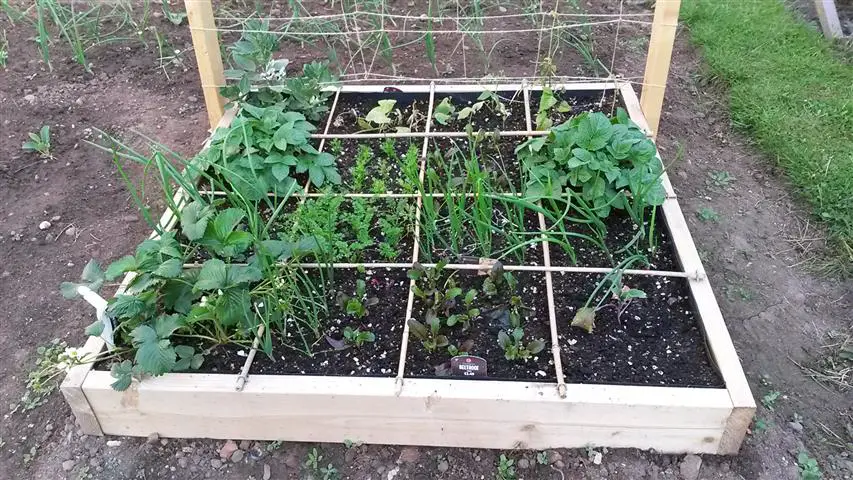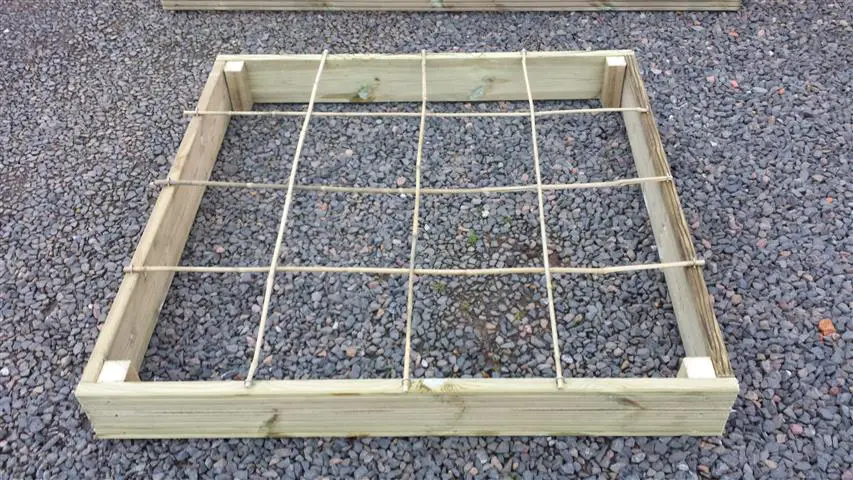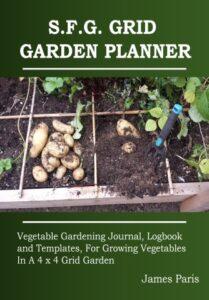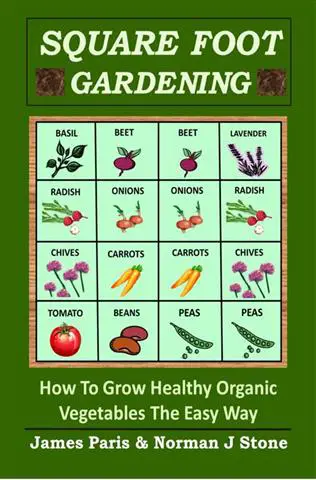As a believer in no dig gardening methods such as square foot gardening, it may come as a bit of a surprise that I am writing an article here on the disadvantages of this system. However the fact is that I also believe that nothing is perfect, and that applies to gardening methods as much as anything else in life.
When choosing the gardening method that best suits the gardener and their particular circumstances, all aspects – good and bad – have to be examined before a conclusion is reached, and good money is spent!
Whilst it is definitely true that square foot gardening can be a very effective method for growing vegetables in limited spaces, it is also true that there are certain disadvantages that have to be considered.
The main drawbacks of square foot gardening generally revolve around the cost of the material. This includes the compost or soil mix and the material to build the structure.
There is of course more to the story, but first of all for those wondering what we are talking about…
What is a square foot garden?
Often referred to as a ‘Grid Garden ‘ In a nutshell the SFG is an area sectioned into 12-inch squares, usually within a 4 foot square framework, to form 16 squares. This can be 4 inches deep to 30 inches deep, and filled with a special mix comprising of compost, topsoil, and vermiculite.
‘ In a nutshell the SFG is an area sectioned into 12-inch squares, usually within a 4 foot square framework, to form 16 squares. This can be 4 inches deep to 30 inches deep, and filled with a special mix comprising of compost, topsoil, and vermiculite.
This is then planted out with vegetables in varying numbers in each of the squares. As the vegetables become ripe for harvest then they are picked and the square is planted over with a different vegetable. This is the basis of rotational gardening on a miniature scale and means that different vegetables are able to be grown throughout the growing season.
Do the advantages of square foot garden outweigh the disadvantages of the SFG system? Personally I think they do – but then again I would say that, as I have written several books and articles on the subject! That aside however, here are the possible disadvantages, or reasons why you may want to reconsider a square foot garden.
and articles on the subject! That aside however, here are the possible disadvantages, or reasons why you may want to reconsider a square foot garden.
Reasons To Question the Square Foot Gardening System
- Frame Has to be replaced: Unlike the in-ground gardening system, the framework of a SFG will rot over time whether it is 5 years or ten years – it will eventually need replaced or repaired. This timing is of course dependant on the type of frame (wood, metal or plastic) that you employ, but either way they will have to be replaced or repaired at some time.
- Start up Costs: If you include the cost of the timbers and the infill material, even a four foot square bed can cost over $150, and more if it is a raised construction that includes a base. Compost is expensive as indeed is vermiculite or perlite – an ‘essential’ additive or soil amendment for all raised bed gardens.
- Limited crops: Whilst this is not always the case, large harvests such as potatoes are a little limited in a square foot garden, unless you include more than 1 square to the garden. This of course has a direct impact on the start up costs of the SFG. Tall crops such as runner beans or other climbing plants need the addition of supports added to the frame – meaning additional costs.
- Labour intensive?: Some complain that the fertile soil in this system also means more weeding and care overall. Whilst this can be disputed on the grounds that the weeds are far easier to pull up, there is no doubt more weeding in the second year onwards with this method as weed seeds get established.
- Quick to dry out: This applies especially to the shallow beds at 6 inches or so deep. Whilst this can be prevented to a certain extent by mulching or growing broad-leaved plants to protect the bed from the hot sun. The fact is that because the beds are not deep and the infill is designed to be free-draining, they have a tendency to dry out quicker than a deeper bed or indeed a traditional garden.
Are square foot gardens a bad idea?
Now that we have looked at the negative aspects of a raised bed garden, I think it is only fair to point out that every gardening method has its drawbacks. Indeed there are many great advantages to the square foot system as you may see in this post.
All gardens need cared for to some degree. Even in a low maintenance garden you will have to weed, feed, prune, and protect from insects and predators to one degree or another – this is the very nature of gardening whether growing vegetables for the kitchen or flowers for the vase.
Personally I find that the square foot method for growing vegetables suits me perfectly, but for you it may be a typical raised bed garden or even growing in straw bales (links to both posts).
Also keep in mind that the very act of caring for a garden, has a huge part to play on the subject of both mental health and physical health. Without the very hands-on aspect behind growing your own food, then you would be just as well to pick it from the store shelf!
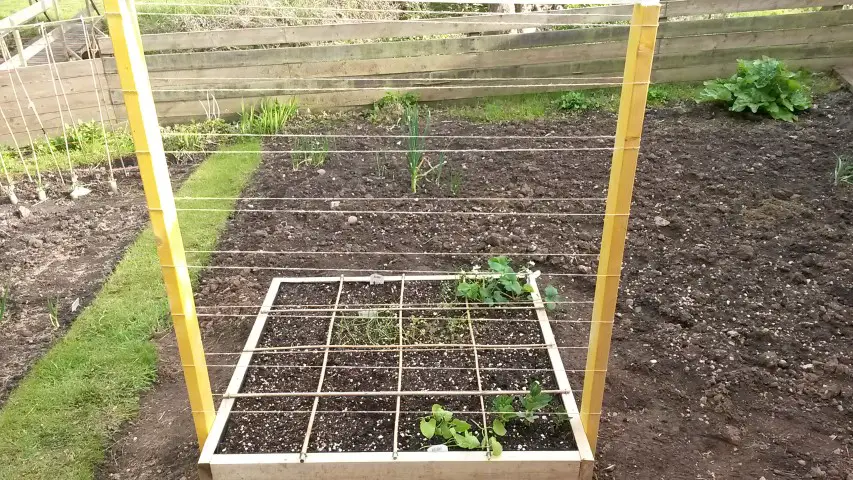
Looking at it from a different angle. If you have a large area of good soil to grow in that is ideally suited for growing vegetables with minimal fuss, then the traditional row gardening method may suit you just fine. You will not have the extra expense involved in setting up several square foot garden frames to cover a large area.
If however you have limited space to grow vegetables in and yet still want to feed the family as much as possible with home-grown veggies, then the SFG may just be the perfect choice for you!
Are Square Foot Gardens limited to choice?
Despite earlier concerns, the fact is that SFG’s are not really restricted regarding the choice of what can be grown in them – unless you want to grow large quantities of any given vegetable. Whilst even this is not impossible – just build more SFG’s – the cost could be a deciding factor.
The main ‘concern’ regarding choice of vegetables is the growing medium itself. This in itself can be alleviated however by the usage of companion planting methods to compliment particular plants. This can in turn help with soil amendment and mineral value.
As an example of this aspect, peas and beans can be planted to add nitrogen to the soil that will be beneficial for other nitrogen-loving vegetables.
Tall leafy plants like sunflowers or sweetcorn can be grown to support and shade other climbing plants like peas, whilst structures can be added to the frame to support all manner of climbing fruits and vegetables.
So as you can see, there are indeed disadvantages to the square foot garden method – but perhaps not enough to discourage you from using this excellent method for growing vegetables of many kinds.
I certainly hope so, and depending on your particular circumstances would recommend you try it at least for 1 season – and decide for yourself if it was worthwhile or not!

